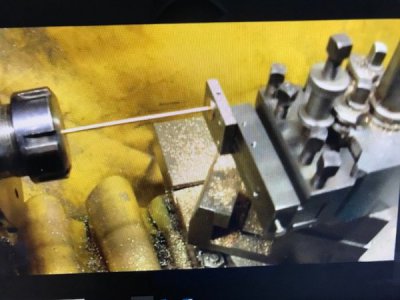- Joined
- May 15, 2016
- Messages
- 98
I would make the thread with a follower right on the other side or all around in front or back of the 60° tool bit. Both following together. And both on the tool post. The tool bit would advance on its own translating set-up and not with compound or cross. With this method no taper in threads. And work is not between centers. Good Luck…Dave.
Hi Dave,
I appreciate your input but I don't quite understand what you have in mind. I would like to learn more if you can explain what you mean by follower.
Thanks, Dick


